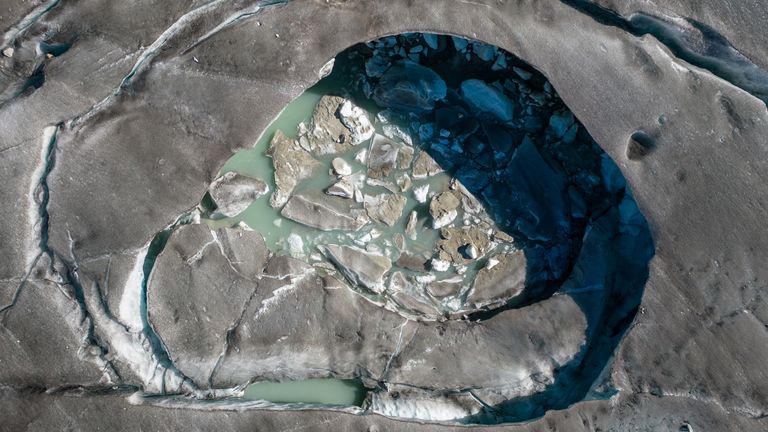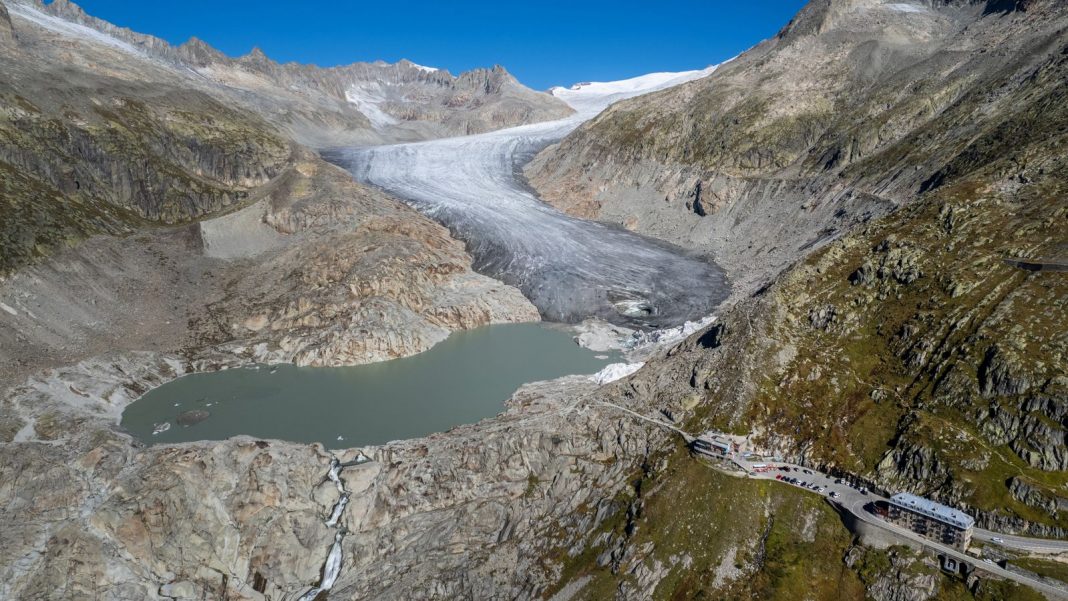Switzerland has lost 10% of its glaciers in just two years, research shows, after high summer heat and low winter snowfall.
The country lost as much ice in the 24 months as it did in the three decades before 1990, researchers said, describing the ice melt as “catastrophic”.
Switzerland – home to the most glaciers of any country in Europe – has seen 4% of its total glacier volume disappear in 2023, the second-biggest decline in a single year on top of a record 6% drop in 2022.
The team at Glacier Monitoring Switzerland (GLAMOS) said the “massive ice loss” stemmed from a winter with very low volumes of snow – which falls on top of glaciers and protects them from exposure to direct sunlight – and high summer temperatures.
All of Switzerland – where the Alps cut a swathe through most of the southern and central parts of the country – was affected, though glaciers in the southern and eastern regions melted almost as fast as in 2022’s record thaw.
In some places, GLAMOS had to cease monitoring due to the melt.
A collapsed part of the Rhone glacier

Images posted on social media by Matthias Huss, who leads GLAMOS, during data collection trips in recent weeks showed new lakes forming next to glacier tongues, as well as streams of melt water running through ice caves, and bare rock poking out from thinning ice.
“This year was very problematic for glaciers because there was really little snow in winter, and the summer was very warm,” he said.
“The combination of these two factors is the worst that can happen to glaciers.”
This content is provided by Twitter, which may be using cookies and other technologies.
To show you this content, we need your permission to use cookies.
You can use the buttons below to amend your preferences to enable Twitter cookies or to allow those cookies just once.
You can change your settings at any time via the Privacy Options.
Unfortunately we have been unable to verify if you have consented to Twitter cookies.
To view this content you can use the button below to allow Twitter cookies for this session only.
This content is provided by Twitter, which may be using cookies and other technologies.
To show you this content, we need your permission to use cookies.
You can use the buttons below to amend your preferences to enable Twitter cookies or to allow those cookies just once.
You can change your settings at any time via the Privacy Options.
Unfortunately we have been unable to verify if you have consented to Twitter cookies.
To view this content you can use the button below to allow Twitter cookies for this session only.
More than half of the glaciers in the Alps are in Switzerland where temperatures are rising by around twice the global average due to climate change.
In some places, bodies lost long ago have been recovered as ice sheets have shrunk.
“Melting of several metres was measured in southern Valais (region) and the Engadin valley at a level above 3,200 metres (10,500ft), an altitude at which glaciers had until recently preserved their equilibrium,” the GLAMOS team said.
Read more:
Antarctic winter sea ice hits ‘extreme’ record low
Climate models warn of apocalyptic future
The average loss of ice thickness was up to three metres (10ft) in places such as the Gries Glacier in Valais, the Basodino Glacier in the southern canton, or region, of Ticino, and the Vadret Pers glacier system in eastern Graubunden.
The situation in some parts of the central Bernese Oberland and the Valais was less dramatic – such as for the Aletsch Glacier in Valais and Plaine Morte Glacier in the canton of Bern, because they enjoyed more winter snowfall.
But even in such areas, “a loss of over two metres of the average ice thickness is extremely high,” the team said.







